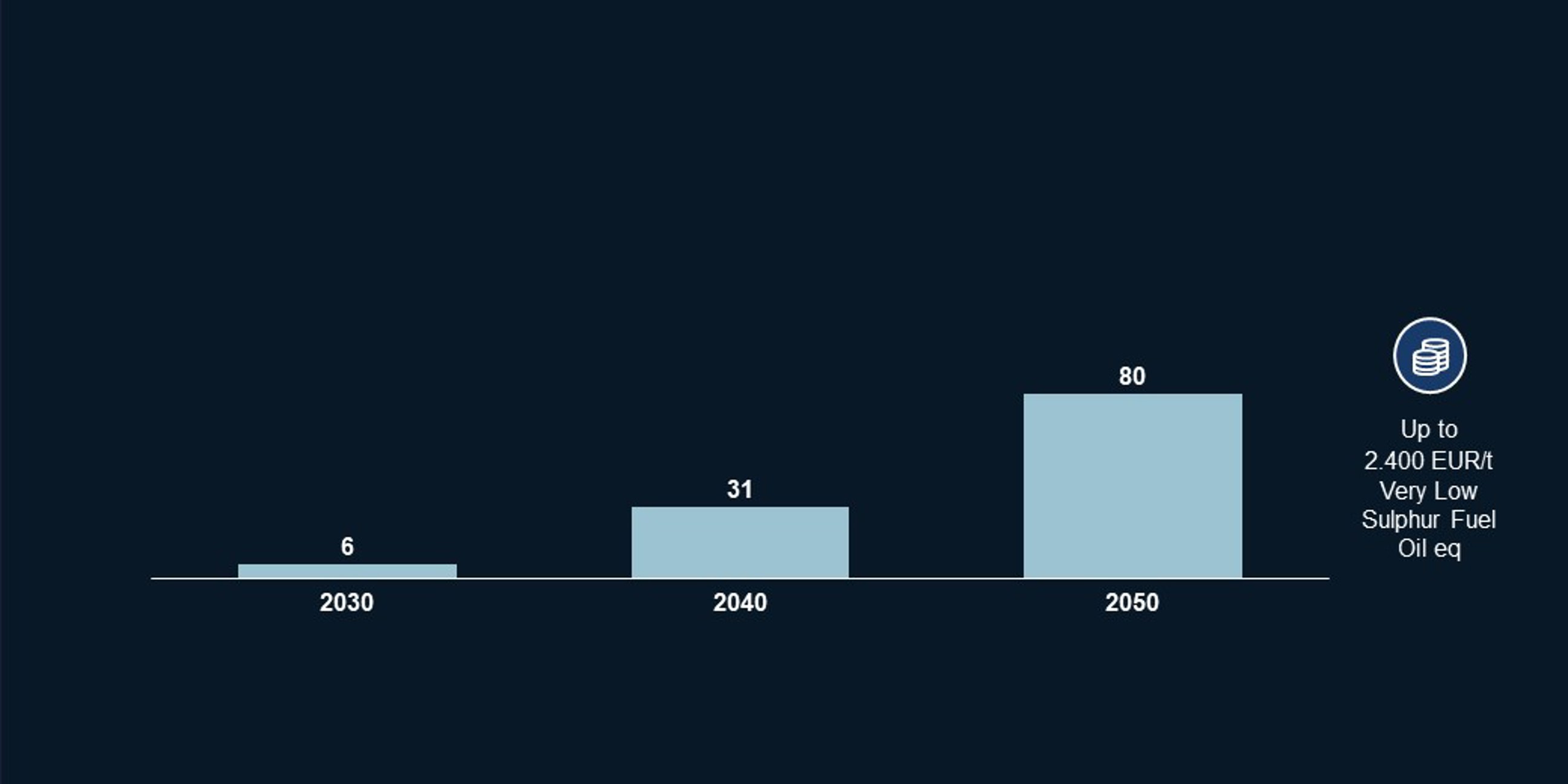
The EU addresses the issue of GHGeq emission savings for shipping under both the FuelEU Maritime and EU ETS legislation.
The FuelEU Maritime legislation requires GHGeq emission reductions of 6% by 2030, 31% by 2040 and 80% by 2050. It applies to 100% intra-EU voyages as well as 50% of voyages that either depart or end in the EU.
Under the FuelEU Maritime legislation, there is also a requirement for fuels on the basis of renewable hydrogen (falling under the label of "renewable fuels of non-biological origin") to make up 1% of the fuels used by 2030. Until 2035, the emissions saved by these fuels can be counted double towards the targets.
Under FuelEU Maritime, the cost of not complying will be EUR 2,400 per Very Low Sulphur Oil equivalent GHGeq emissions, plus the price difference between a renewable fuel of non-biological origin and a conventional fuel for not reaching the 1% requirement.
The FuelEU Maritime legislation also allows shipping companies to "pool" their performance in a voluntary market. This implies that when a ship performs better than the GHG thresholds required, a shipping company can valorise these additional emission savings if there is a demand from other shipping companies in the market.
The EU ETS is a cap and trade market mechanism in place in the EU since 2003, which was traditionally applied to heavy industry. The cap lowers every year, which raises the price of the carbon allowances available in the market. From 2026, EU ETS will apply 100% to intra-EU voyages as well as 50% of voyages that either depart or end in the EU.
This implies that for any GHGeq emitted at combustion, shipping companies will have to pay the price per tonne of CO2 that is the ETS market price at that point in time.